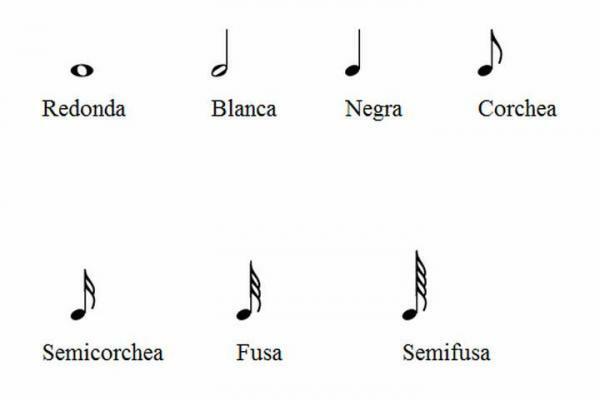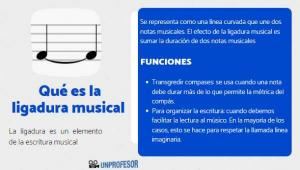Musical figures and their duration

Image: Answers.tips
Music is a phenomenon that we capture with our ears but that goes far beyond the senses. There are several elements in it that make you want to whistle, hum, even move and / or dance even if you don't have much theoretical knowledge of music, because it goes beyond the intellectual. Thanks to all these factors linked to instinct, we can say that it is a powerful and highly contagious art. One of these factors is pace. In this lesson from a TEACHER we will learn about musical figures and their duration since they are the fundamental base of the rhythm.
If you've ever found yourself wanting to dance or tap your feet while listening to music, this is for sure thanks to the beat..Rhythm is the fundamental element of music that makes you can follow the thread of a song or a work, which allows us to sing or play music with other people, which causes you to want to anticipate one sound after the other. If we put it in general concepts, the rhythm is a sequence of sounds in a given time.
Unlike tuning, which we understand by height ("low or high" - "low or high"), we visualize rhythm in musical writing horizontally. A rhythm is made up of 2 or more notes when they are one after the other, regardless of their pitch. This means that even when we don't have defined notes, we can still have a rhythm, like when we play a drum or any percussion instrument.
Duration in music
When talking about rhythm, there is another very important concept that we must mention: “duration”. Duration is amount of time that something is maintained or prolonged, in music, we speak of sound. The duration of a musical note is the amount of time that it keeps sounding. Since we are already talking about "quantities" that means that, to have an agreement, we need to measure things.
In music the way we measure the duration of a song or work is with the unit called “compass". In the staff we can visualize a measure when the staff is divided by a vertical line. In a measure we can write only a certain amount of notes and this amount depends on a number in the form of a fraction that is indicated at the beginning of the staff and tells us what we call "metrics". Thanks to this number we can know how many notes fit in one measure and when we should continue writing in the next measure.

Image: Slideshare
Now we are going to discover you which are the musical figures and their duration. When we write notes, they have a certain value that takes up space of time in the measure. The notesThey have a different symbol depending on how long we want them to last and we call these "Musical figures".
The drawing of a musical note has 3 parts: head, stem and bracket. We recognize the figure of the note depending on how these parts are.
Duration according to the musical figure
To understand the duration of each musical figure more easily, we will take the following figure as a reference: the black one. The black one has the duration value of 1 time in the compass. If our time signature is 4/4, (which is the most common metric today) it will fit 4 quarter notes.
From that first figure we can begin to understand the rest of the musical figures. Below is a list of the most common musical figures (there are more), from the longest to the shortest:
- Round = 4 black
- White = 2 black
- Black = 1 time
- Quaver = 1/2 black (2 eighth notes = 1 quarter note)
- Semiquaver = 1/4 black (4 semi-eighth notes = 1 quarter note)
- Fusa = 1/8 of quarter note (8 whips = 1 black)

Image: School Notes
In addition, there are certain instruments that cannot produce a very long sound (such as wind instruments, in which rely on the musician to blow through them to produce sound) and it would be very difficult for them to create music without any breaks or respite.
As well as in the notes, silences also have a duration and bear their name depending on the figure they replace, so that if a silence replaces the duration of a white, the silence is called "Silence of white."
The most common musical silences
Again we list with a list of the most common musical silences from the longest to the shortest:
- Silence of Redonda
- Silence of Blanca
- Silence of Negra
- Eighth note silence
- Semi-Eighth Silence
- Silence of Fusa
Now that you know the musical figures and their duration, the step you must follow now to be able to reading and writing rhythm is memorizing and practicing how all the figures look and how they are drawn musicals. Thanks to all the possible combinations, music is a crude art even when it comes to rhythm alone. Imagine what can be achieved using the rest of the elements!



